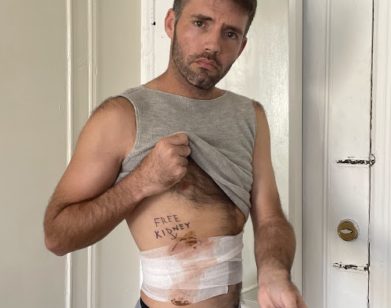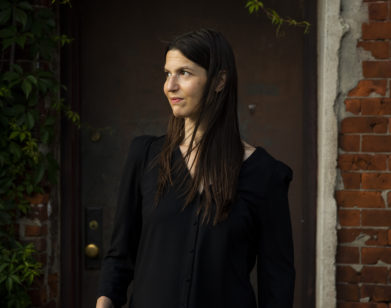Novelist Tom Barbash Read Every Edition of the 1979 New York Times to Capture Nostalgia for ‘The Dakota Winters’

John Lennon and Yoko Ono in front of the Dakota, 1980.
Tom Barbash’s latest novel works like a gentle act of necromancy, communicating directly with New York City’s out-sized celebrities, fables, histories, and locations. For his fourth novel, The Dakota Winters, the writer selected the grounds of the Dakota, the historic Upper Westside apartment building with a tangled history of its own, as the backdrop for his pop-culture fantasy. To tell the story of the Winters, a Wes Anderson-esque family of letters looking to reclaim their place in the hot lights of late-night TV hosting, Barbash grafted stories of the Dakota’s most famous residents, most notably John Lennon and Yoko Ono, onto this family saga set in the early 1980s. It’s a history-rich saga written for the kind of reader who enjoys YouTube deep dives and archival ephemera — someone who hasn’t yet figured out what to do with their parents’ back issues of The New Yorker. To get an idea of the source material Barbash used to capture this moment in Ed Koch’s New York City, the novelist shared with us four books, a handful of YouTube clips, and the fact that he read just about an entire year’s worth of The New York Times to give The Dakota Winters that perfect nostalgic glow. The result is so pitch perfect we’ll just have to let it slide that he didn’t read every 1979 edition of a certain magazine that’s somewhat famous for capturing New York City at that very same time.
———
The New York Times Archives
I read the newspaper for every day of the period covered in the novel — more closely on the days on which a scene took place. It helped me plan Buddy’s jokes and monologues, and to know what people were arguing about around the breakfast table. It also gave me the sense of living in that time, of knowing only what was available to me then.
The Kon Tiki
Thor Heyerdahl’s chronicle of his improbable and hair-raising voyage from Peru to the Polynesian Islands in a balsa raft using only the tools and technology that would have been available in pre-Columbian times. It was an inspiration for John Lennon, and in my book for John and Anton.
Live from Hurrah’s NYC
I went pretty regularly to this Upper West Side punk club, but this DVD, Back in the Day: Live from Hurrah’s, certainly stoked my memory. There’s great footage here of the Au-Pairs, Pylon, The Go-Gos, The Fleshtones and others.
The John Lennon Letters
An amazing assemblage of his thoughts, beliefs, fears and affections. His personality comes through, as does his evolution as a musician and a man.
Dick Cavett, Johnny Carson, Jonathan Winters, Tom Snyder
I became obsessed not only with these greats but with the lesser, and even more addictive, shows like The Joe Namath Show (which lasted about a year), or Playboy After Dark, where Hugh Hefner drifted around what was meant to look like a cocktail party before finding party guests like Roman Polanski and Sharon Tate, before proceeding to ask a few questions about nudity in movies. Was Sharon for it?
The City Observed
An exhaustive, splendidly written guide that walks readers through the built environment of New York by the city’s keenest architectural observer, Paul Goldberger. Anywhere, I could go anywhere I wanted to go just by borrowing Goldberger’s eye. Best of all, it was published in 1979, perfectly current for my use.
Life at the Dakota
This book is a goldmine of history about the Dakota and the luminaries within. All the intrigue and myths and stories passed through the generations captured by Stephen Birmingham.






